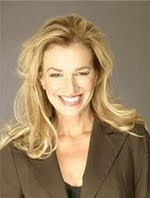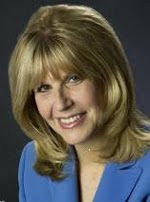by Cathy Scott
Wanna-be scammers sometimes jump out of the shadows to steal authors’ identities to pull off their dirty deeds. Case in point was my own recent encounter with a man who said he was developing the definitive biopic about Tupac Shakur.
That’s been done. Over and over. But no one’s quite hit the mark yet. So, I talked to Mr. Scam, who said he was a producer. The first red flag was his request that I do interviews for his documentary.
I’m used to being at the flip side of a reporter’s notebook, taking down interview notes and quotes. I’m also used to being on the lens side of the camera as the interviewee, especially when it comes to the Tupac story, because of my book, The Killing of Tupac Shakur, about the murder.
What I’m not used to is being asked to do a producer’s work. They land the interviews, hire the video crew, nail down a studio and on-site locations for the interviews, and typically get on-air talent to conduct the interviews.
But scammer was eager. He didn’t stop calling. Or e-mailing. He wanted to get me immediately signed to a contract–for what, it wasn’t made clear. What did become clear was his burning desire to use my name as part of his project.
 How to Spot a Scammer
How to Spot a Scammer
Unlike other producers who have contacted me over the years, this one didn’t offer his background or even the name of his company. I learned that myself through a simple Internet search. A tap of the Google “send” button turned up a disturbing recent past. He’d been arrested and charged in a multi-million-dollar Ponzi scheme (think Madoff) bilking people and companies out of millions for investments in projects and land deals as illusory as the fabled swampland in Florida.
Wanna-be scammers sometimes jump out of the shadows to steal authors’ identities to pull off their dirty deeds. Case in point was my own recent encounter with a man who said he was developing the definitive biopic about Tupac Shakur.
That’s been done. Over and over. But no one’s quite hit the mark yet. So, I talked to Mr. Scam, who said he was a producer. The first red flag was his request that I do interviews for his documentary.
I’m used to being at the flip side of a reporter’s notebook, taking down interview notes and quotes. I’m also used to being on the lens side of the camera as the interviewee, especially when it comes to the Tupac story, because of my book, The Killing of Tupac Shakur, about the murder.
What I’m not used to is being asked to do a producer’s work. They land the interviews, hire the video crew, nail down a studio and on-site locations for the interviews, and typically get on-air talent to conduct the interviews.
But scammer was eager. He didn’t stop calling. Or e-mailing. He wanted to get me immediately signed to a contract–for what, it wasn’t made clear. What did become clear was his burning desire to use my name as part of his project.
 How to Spot a Scammer
How to Spot a ScammerUnlike other producers who have contacted me over the years, this one didn’t offer his background or even the name of his company. I learned that myself through a simple Internet search. A tap of the Google “send” button turned up a disturbing recent past. He’d been arrested and charged in a multi-million-dollar Ponzi scheme (think Madoff) bilking people and companies out of millions for investments in projects and land deals as illusory as the fabled swampland in Florida.
My scammer’s new con was the promise of a documentary that would never be made using an author’s name to lend it credibility. The author being offered the starring role in that scam was me. In the meantime, my personal predator had already been living large on the backs of others running an old-fashioned con.
FBI to Author: 'He’s Desperate – Give Him Wide Berth'
An FBI special agent, when reached about the case, said the poser was desperate. He’d lost his house and had run out of cash. He was fund-raising his own support. The fed’s advice? “Stay away. And don’t get him angry. You don’t want to be in a confrontation with this guy.”
As business women, we all have to watch for red lights, green lights, and red flags. Not everybody is good at recognizing them. I’m a skeptic at heart. I’ve been in the business of crime news too long not to be. And it’s not just little fish that get fried. Even the big kids occasionally get scammed. Witness the recent porn site ad scam that AT&T and Verizon fell for.
Here’s how to protect yourself from scammers. Recognize the red flag, do your research, and consult with law enforcement.
For Mr. Producer, I have some very public advice: Quit e-mailing, quit texting, quit calling. I know who you are and what you’re trying to pull. Don’t use my name to plan your crime.
(Reprinted with permission from ForbesWoman).
















































